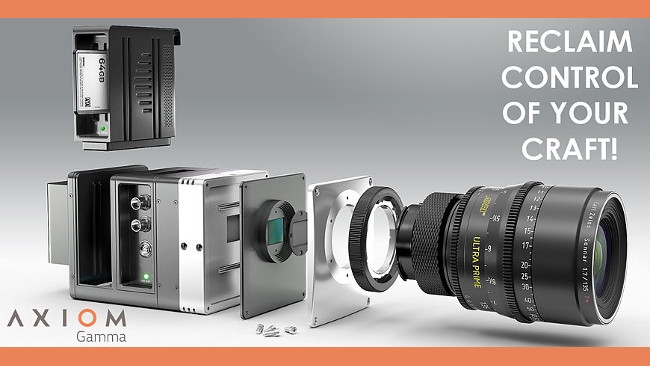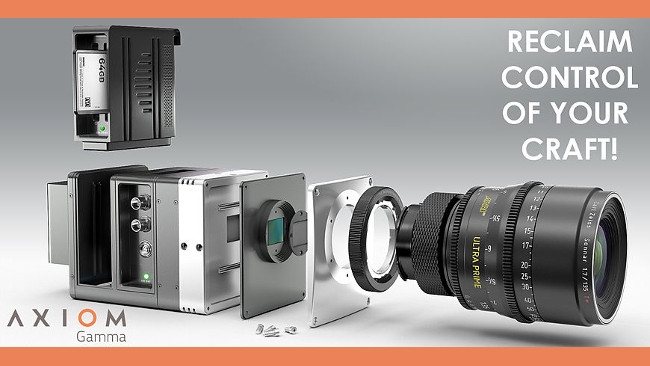
 Apertus Gamma
Apertus Gamma
As the Apertus camera teeters on the verge of being produced, Rakesh Malik chronicles the progress to date of the project which is committed to bringing the first production-ready open source camera to market.
Open source has been a buzzword in information technology for quite awhile now. Some open source software, like Linux, has become more than just a cool technology, as a number of commercial companies like IBM, RedHat and Suse got behind it and grew it into a true enterprise platform. Open source products range from donations by original developers to fully supported products, but all share something in common: the fact that they are community property. Some open source pundits even laud the proprietary Java platform, clearly having lost sight of what 'open source' really means.
Open versus free
One of the central goals of the open source concept is the sharing intellectual property. While many equate 'open source' with 'free', that's not always the case; hardware products have physical components that bear a cost in order to manufacture them, for example. Similarly, commercial open source software carries a cost for support; while one can get a free version of Red Hat Linux, commercial support has a cost. Without charging for support contracts, Red Hat wouldn't be able to sustain itself.
One well known open source project began as a proprietary 3D animation and rendering system, until its lead developer acquired the intellectual property and released it to the open source community. It has since then grown into a professional grade 3D suite and the community has also produced several animated films with it.
Open source hardware projects are much less common than open source software projects, but there are a few fledgling projects, such as Elcano, an Arduino based vehicle automation system, and Hack-e-Bot, an educational robotics platform, also based on Arduino.
The promise of an open source camera
Apertus embarked on the daunting goal of making an open source digital cinema camera. In a market that's growing more crowded with new cameras announced at nearly every trade show, it might be difficult to imagine what an open source camera platform might bring to the table.
Fortunately, thanks to Apertus, we no longer have to imagine. Instead, we can now hope…and get on-board to support and even help to develop it.
Apertus' first camera was a proof of concept. It built a functioning camera using commercially available components.
The Apertus team got the AXIOM Alpha camera working with an HDMI recorder, calibrated the colors and implemented fixed pattern noise correction. It even developed a device to create an evenly lit image for fixed pattern noise measurements. The team tested the sensor’s 'Smart Dynamic Range' mode, which adds knee points to the sensor’s response curve, enabling the camera to capture more dynamic range in the highlights.
Building on this experience, the Apertus project founders launched an INDIEGOGO campaign to raise funds so that they could design and build the AXIOM Beta version of their open-source camera. To support their campaign, they showcased some sample footage that they'd capture with their AXIOM Alpha camera and, again in the spirit of open source, they shared their ungraded footage and included samples of the same footage that someone else had graded.
While the early sample images from the AXIOM Alpha were promising, the images they were sharing by the time they launched the crowdfunding campaign looked excellent.
Funders had a few sensors to choose from and the team added a few options as the campaign progressed. The Apertus team wanted to give funders options from the outset to choose sensors based on their needs; the campaign listed super 35 and super 16 options, later adding monochrome choices as well.
Enticed by the quality of the footage, the dedication of the team and the prospect of an open source camera platform, a fair number of people supported the campaign in its early stages.
Rally to the finish
After that initial surge, the campaign seemed to fizzle a bit. People were still signing on, but it was starting to look uncertain that it would reach its funding goal.
Several partners got on-board, including Magic Lantern, drawing additional attention to the project.
Near the end of the campaign, interest picked up again, pushing the campaign to double its funding goal and launching the next phase of development with renewed interest and optimism.
The Apertus team used the campaign funds to purchase sensors, boards, tools and 3D printing hardware so that it could build enclosure prototypes.
For months, there wasn't much news to report, so the project was fairly quiet. There were, unsurprisingly, unexpected delays, both from new ideas in development and from holdups in getting tools and equipment delivered. Apertus set up a platform for collaboration on the its web site, so that design and development work for the image processing and camera control software (and hardware) could begin. The project is already turning it into a community effort.
Things were taking longer than planned, but the team had also added some upgrades; it added some additional bandwidth to the system, along with a clever power management feature that would enable long time lapses with relatively small batteries.
At NAB, the team had its AXIOM Alpha on display, as well as a hardware complete AXIOM Beta. The software wasn't working yet on the new hardware, so the team wasn't capturing any images with it, but it estimated that AXIOM Beta software would be working in a month or two. Apertus accomplished this goal, sharing some of the first images taken with the camera.
Now, Apertus is getting ready to start producing cameras for funders. The team is planning to purchase the necessary components in volume, in order to get lower per-unit pricing. To facilitate this, Apertus has proposed a tiered payment plan.
The future of Apertus
Since Apertus plans to continue developing the hardware, there may well be significant changes in the hardware from one batch to the next. Voucher holders can pay for a camera in an early batch and then upgrade to a model from a later batch for the cost of the new boards. While the Apertus team has been working to make sure that end users will be able to install new boards without any specialized skills or tools, it is also willing to perform the upgrades for anyone who prefers not to do the upgrades themselves.
While working on the AXIOM Beta, the Apertus team received a grant from the EU to support development of the AXIOM Gamma camera, so the design for the AXIOM Gamma is already underway in parallel with AXIOM Alpha development. While the AXIOM Beta will not include internal recording, the AXIOM Gamma will be a full-fledged production camera and completely customizable.
One major development that came out of the AXIOM Gamma project is that the sensor boards from the AXIOM Beta will be compatible with the AXIOM Gamma, making that transition about as simple as it gets.
Now, the Apertus team is getting ready to start sending cameras to supporters. In spite of some hardware upgrades, including a dual-core ARM processor and increased system bandwidth, due to the number of supporters, the cost per unit is actually a little bit lower than anticipated.
To make volume orders (so that they can produce production hardware), Apertus announced a tiered payment plan; the idea is to give the supporters a way to pay in tiers that covers the cost of the volume orders. By accepting payments for the sensor, the team can cover the cost of 500 units, so that it can start shipping versions of the AXIOM Beta with the early and incomplete enclosure. While not necessarily ready for production use, these will be working cameras that people can use to start working on AXIOM Beta-related software, like the operating system or image processing, developing components for the AXIOM Gamma and so on.
The final AXIOM Beta will have a complete enclosure with an E-mount and either a Canon or Nikon mount. The team is considering a PL mount option down the road, depending on interest. The AXIOM Gamma will have a PL mount for sure, being a professional cinema camera.
The team also mentioned having an HDMI recorder in house, so it will conduct testing to make sure that users will be able to record the HDMI feed from the AXIOM Beta, initially in 1080p (so that the supporters will be able to use their cameras when they get them) and 2160p via firmware update.
It's nearing a full year since its crowdfunding campaign went live and the Apertus team has been quite busy, both developing the Apertus AXIOM Beta and kicking off the AXIOM Gamma project, due in 2016. It has an eye to the future and, unlike most open source projects, it is working from a business plan designed to make this a sustainable business, rather than a one-off product launch. It's an ambitious goal for a project has the potential to change the industry as much as Blackmagic already has.
Tags: Production


Comments